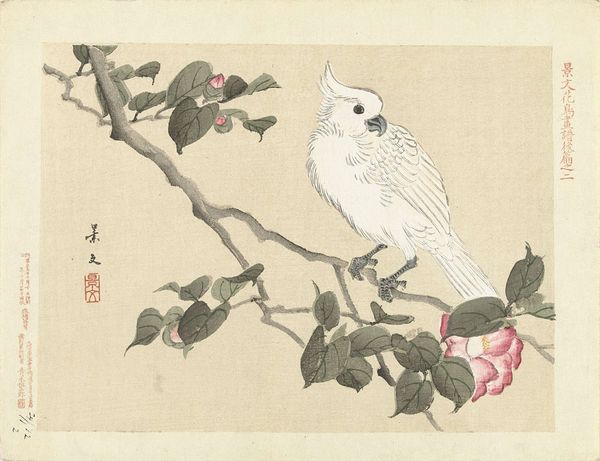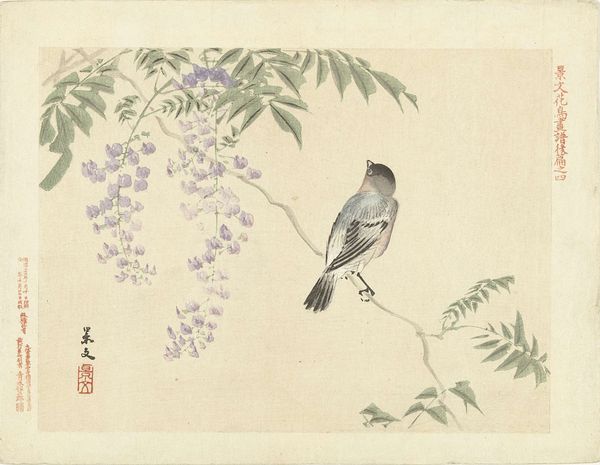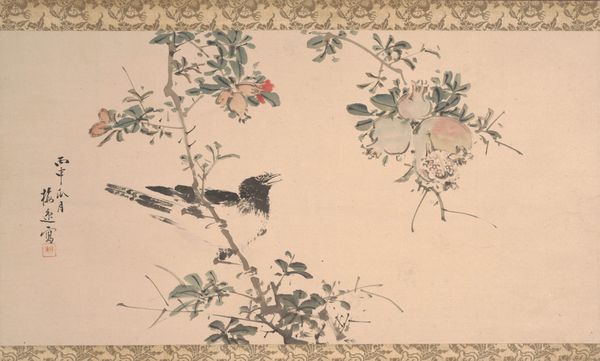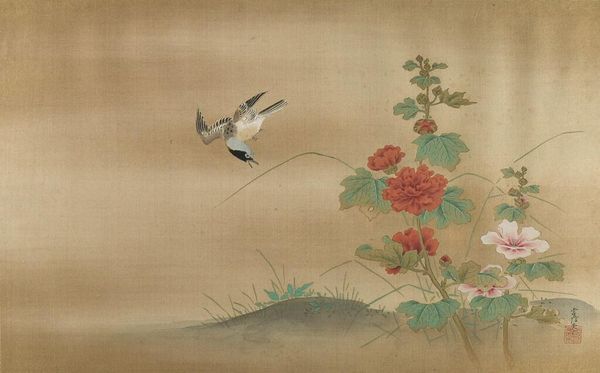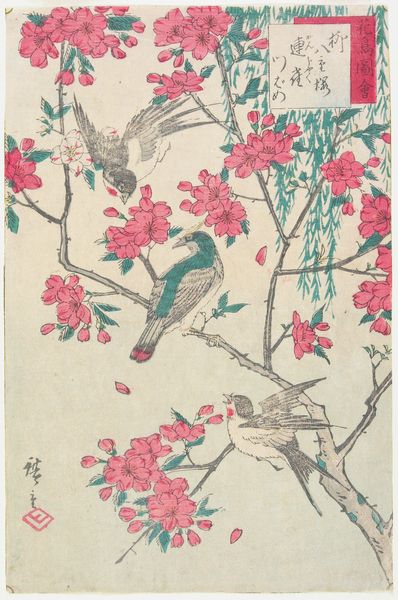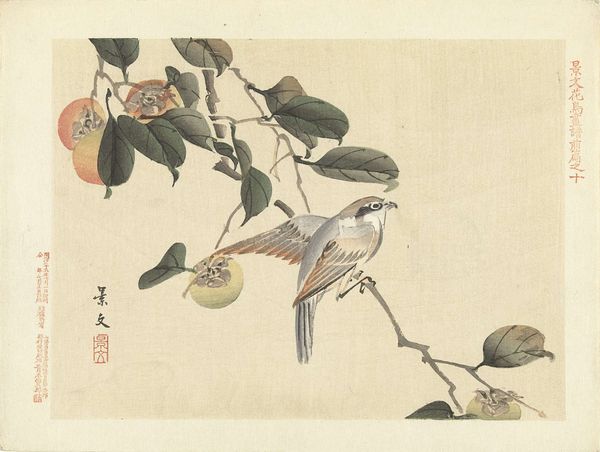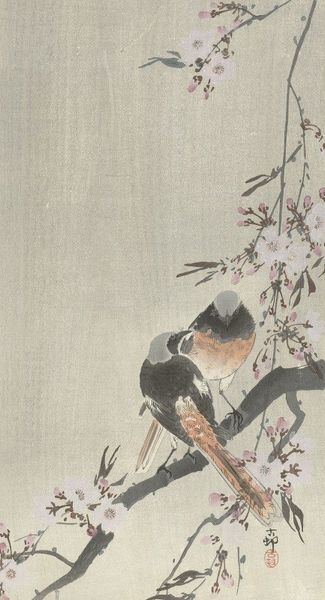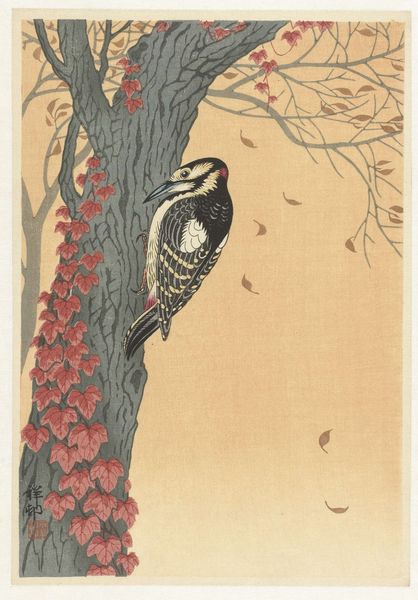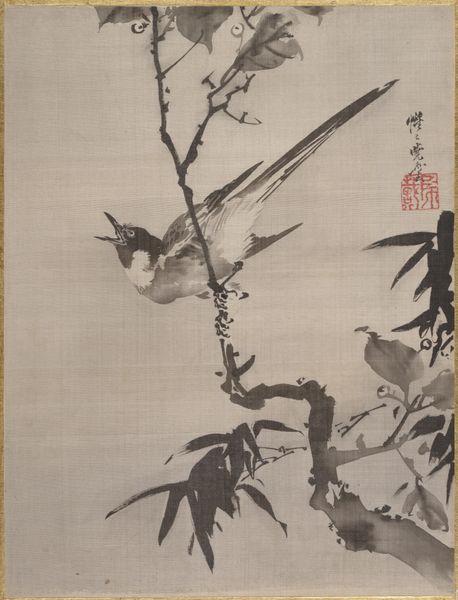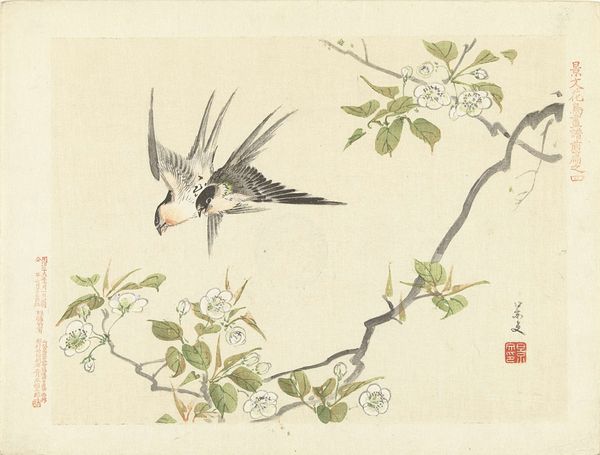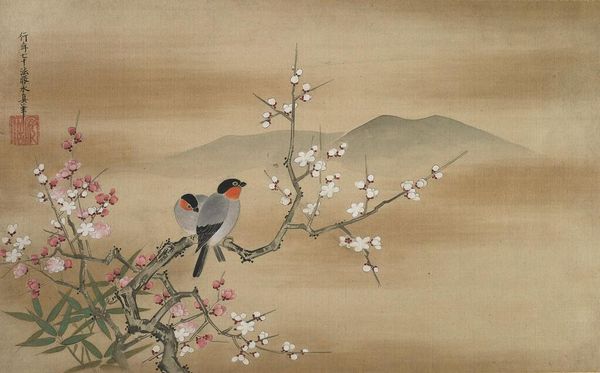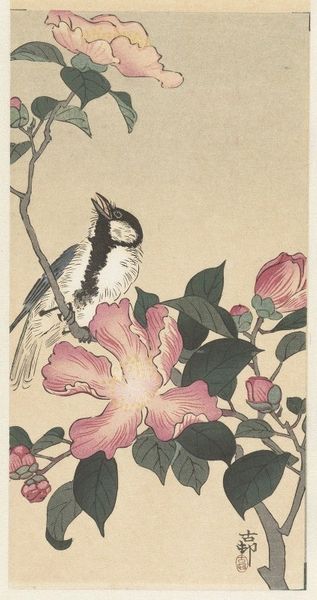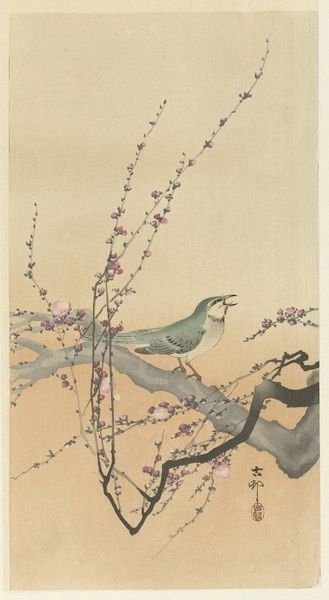
Copyright: Public Domain: Artvee
Curator: Look at this charming woodblock print, probably dating between 1925 and 1936, called "Two great tits at blossoming tree" by Ohara Koson. Editor: My initial impression is of peacefulness. The soft color palette and delicate details evoke a sense of calm and a connection to nature. Curator: Exactly. The Ukiyo-e tradition, from which this work emerges, often explores themes of nature, beauty, and the fleeting moments of everyday life. It’s difficult to view such images without being reminded of the gendered labor that circulated throughout the system, where men were largely responsible for production and dissemination. However, women worked behind the scenes. In fact, gender, and other identities, also came into play within representations of actors in relation to patrons, too. Editor: From a formal standpoint, the composition is interesting. The stark contrast between the light sky and blossoming tree grounds our attention. The dynamic lines of the branches contrast with the small falling flower petals, creating visual interest. It evokes a sense of movement, doesn't it? The positioning of the birds further enhances this dynamism. Curator: Absolutely. Koson was known for his depictions of birds and flowers, which aligns him with broader cultural narratives connecting to avian imagery of freedom, delicacy, and transient existence in Asian artistic traditions. These motifs, like cherry blossoms and certain bird species, possess symbolism intricately woven into social dynamics and spiritual beliefs. These symbols act as signifiers related to class, wealth, morality, and also ideas about transience. Editor: It’s interesting how Koson simplified natural forms into shapes. Looking at how the leaves are rendered with crisp edges, it makes me appreciate his mastery of form. It creates a compelling and pleasing abstract quality. Curator: Thinking of the historical context of Japanese art during that era makes me realize how this art both conforms and challenges assumptions related to cultural identity and imperialist expansion at the time. We could read this print, for example, as speaking to an idyllic vision of a nation or region. Editor: Ultimately, this piece shows Koson's skillful observation and artistry. The strategic use of color and line draws the viewer in and showcases his intimate knowledge of avian subjects. Curator: Yes. The beauty lies, perhaps, in how Koson captures a tiny vignette of ecological life while quietly referencing complex social narratives related to nature and symbolism.
Comments
No comments
Be the first to comment and join the conversation on the ultimate creative platform.
